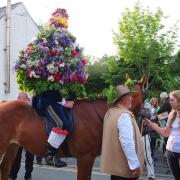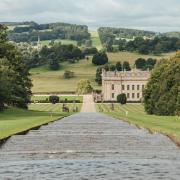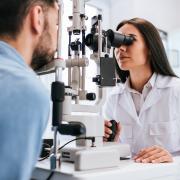Ashley Franklin heads to Cromford to explore the recently opened Masson Mill Textile Museum, found in Richard Arkwright’s iconic former factory, where he learns more about this new and highly engaging attraction in the Derwent Valley Mills World Heritage Site
At the turn of this year, I began assembling the final pieces of a cherished long-time project: the first photo book of the Derwent Valley Mills World Heritage Site. However, I was in a quandary.
As the opening section of the book was ‘Industrial Heritage,’ the first images had to focus on the northern gateway to the world heritage site, specifically Masson Mill, opened by Sir Richard Arkwright in 1783.

Of his 47 mills nationwide, Masson Mill became his flagship as it enabled him to speed up and expand the production of cotton yarn on his water frames.
So, this would be the perfect opening to my book, especially as Masson Mill is not only the best preserved of Arkwright’s cotton mills but also houses the Textile Museum, the most comprehensive collection of historic working textile machinery in the world.
Trouble was… Masson Mill was closed due to Covid, with its future uncertain. How could I possibly pen positive captions for images of what was, effectively, a mothballed museum?

As it turned out, I was able to compose celebratory captions as well as write an approbatory article here, heralding a new life for the textile museum.
This is because early in 2023, Derwent Hydroelectric Power Ltd purchased Masson Mill and, by the summer, had re-opened the textile museum so that visitors could once again savour the ambience of a working mill and, at the same time, discover the fascinating history of the textile industry.
What makes this takeover so heartening is that Derwent Hydro is the ideal custodian of Masson Mill and its museum: the company has a connection with not only the Derwent Valley but also Richard Arkwright himself.
Still waters run deep, indeed: behind this seemingly run-of-the-mill buyout is an enterprise that is passionately driving the cause of renewable energy, a hark back to the water power generated by Arkwright, a founding father of the Industrial Revolution.

‘What drew me to purchase Masson Mill’, declares Derwent Hydro’s development manager Jamie Needle, ‘was that in my eyes it embodies the future of industry as well as its origins.’
What of the origins of Derwent Hydro? It began in the heart of the Derwent Valley 35 years ago, well before the word ‘renewables’ entered the lexicon.
In 1988, former BBC Radio Derby engineer Jon Needle refurbished a disused turbine house in Milford. This became the first of many generating stations that were developed across Derbyshire and beyond.
Come the turn of the millennium, Jon’s three sons, Jamie, Simon and Dean, had joined the firm and Derwent Hydro expanded its operation nationwide, investing in new hydro power schemes or buying existing ones, as was the case with Masson Mill.

Coincidentally, 1988 was also the year that Masson Mill was purchased by businessman and former history teacher Robert Aram.
This entrepreneur began buying up mills during the mass closures of the 1980s, with a view to turning them into industrial units.
That was until he came upon Masson Mill. He found a ‘jewel in the crown,’ and moved machinery from his other mills to make Masson a showpiece museum which would re-create the atmosphere of a working mill.
In 1999, when Robert eventually opened the Textile Museum, the Edinburgh Woollen Mill Group created a popular ‘shopping village’ on the site.
By this time, Derwent Hydro had already established a connection with Masson Mill, being instrumental in bringing the mill’s hydroelectric turbines back into operation.
When the entire Masson Mill operation shut down during the pandemic, Derwent Hydro eyed an opportunity.
As Jamie recounts, the presence of the Textile Museum galvanised the takeover: ‘When, as a hydro company, we got involved with the mill, we came to appreciate that not only was it a testament to the crucial power of the River Derwent but also that the museum was telling us a much broader story.’
A crucial factor, adds Jamie, was that in creating the museum, Robert Aram had ‘sustained the essence of Masson Mill’.
Indeed, as Robert himself told Derbyshire Life in 2015: ‘We haven’t done it up Walt Disney fashion. You get proper working machines where, for example, you can see, hear and smell 2,000 looms clattering away. These machines do genuinely make cloth. What we have here is authentic and evocative.’
And it still is, as my visit to the re-opening happily confirmed. Along with the looms, there are spinning mules, line shafting machines, carding engines, doubling machines, a huge steam engine, a vast boiler room, a gruesome-looking machine called ‘The Devil’ which used large rotating spikes to break up raw bales of cotton, and a room containing a staggering 680,000 bobbins, the largest collection in the world.

It’s an amazing sight: wall-to-wall bobbins, quite literally, and they hang from the ceiling, too.
When tour guide Kevin Gilbert started one of the machines, the rattling noise made one wonder how deafening it would be with all the machines running in one of Arkwright’s mills. Reportedly, workers had to communicate with sign language and lip reading.
As Simon Needle adds: ‘The detailed information given on the tour presents alarming insights into the tough and dangerous lives of mill workers.’
Indeed, Kevin revealed that because young children were small and nimble, they were given perilous jobs such as climbing underneath moving machinery to remove any cotton pieces that had fallen below.
A reminder of the workforce – kids and grown-ups - is conveyed through full-scale cardboard figures which appear like ghosts from the mill’s past.
One of the delightful touches to the Textile Museum tour was created with children in mind, as youngsters can get their entrance tickets punched by using an old clocking-in machine, a pertinent pointer to Arkwright’s creation of the factory system.

However, prior to that is the most welcome new addition to the museum: a visitor centre. As well as offering refreshments, you can browse a textile-themed gift shop where you can actually buy machinery parts including bobbins, shuttles and healds (devices which control the movement of warp yarns during the weaving process) as well as one-off gems from the mill store rooms.
They even sell both the string made on their doubling machine and fabric woven from their 130-year-old Lancashire loom.
While in the visitor centre, I gazed across at the main part of Masson Mill once occupied by the shopping village.
Jamie was reticent to reveal any plans for those huge spaces, only to say that he has had ‘some interesting suggestions from local residents and businesses’ and would welcome more.

One thing’s for sure, Jamie and his brothers are proud to be the conservators of an historic building that is also hugely relevant to today’s drive to renewable energy.
Our world heritage site can effectively boast that Sir Richard Arkwright was even more visionary than the history books record, in that he could be viewed as the original environmental industrialist, a point emphasised by Jamie.
‘Our Textile Museum tour reveals that hundreds of machines that ran here were directly powered by the river, and this museum helps to promote an understanding of the role of clean energy in the past and its potential for the future,’ he concludes.
‘The Industrial Revolution began with clean, green water power and we need to get back to industry being powered renewably. As a renewable energy company ourselves, the opportunity to be based in a place with that story, where we were already looking after hydrogeneration, was too good to miss. It’s an exciting future.’
The Masson Mill Visitor Centre is open 11 am – 4 pm every weekday. Museum access is by guided tour (only) at 2 pm every weekday.
massonmills.co.uk



























